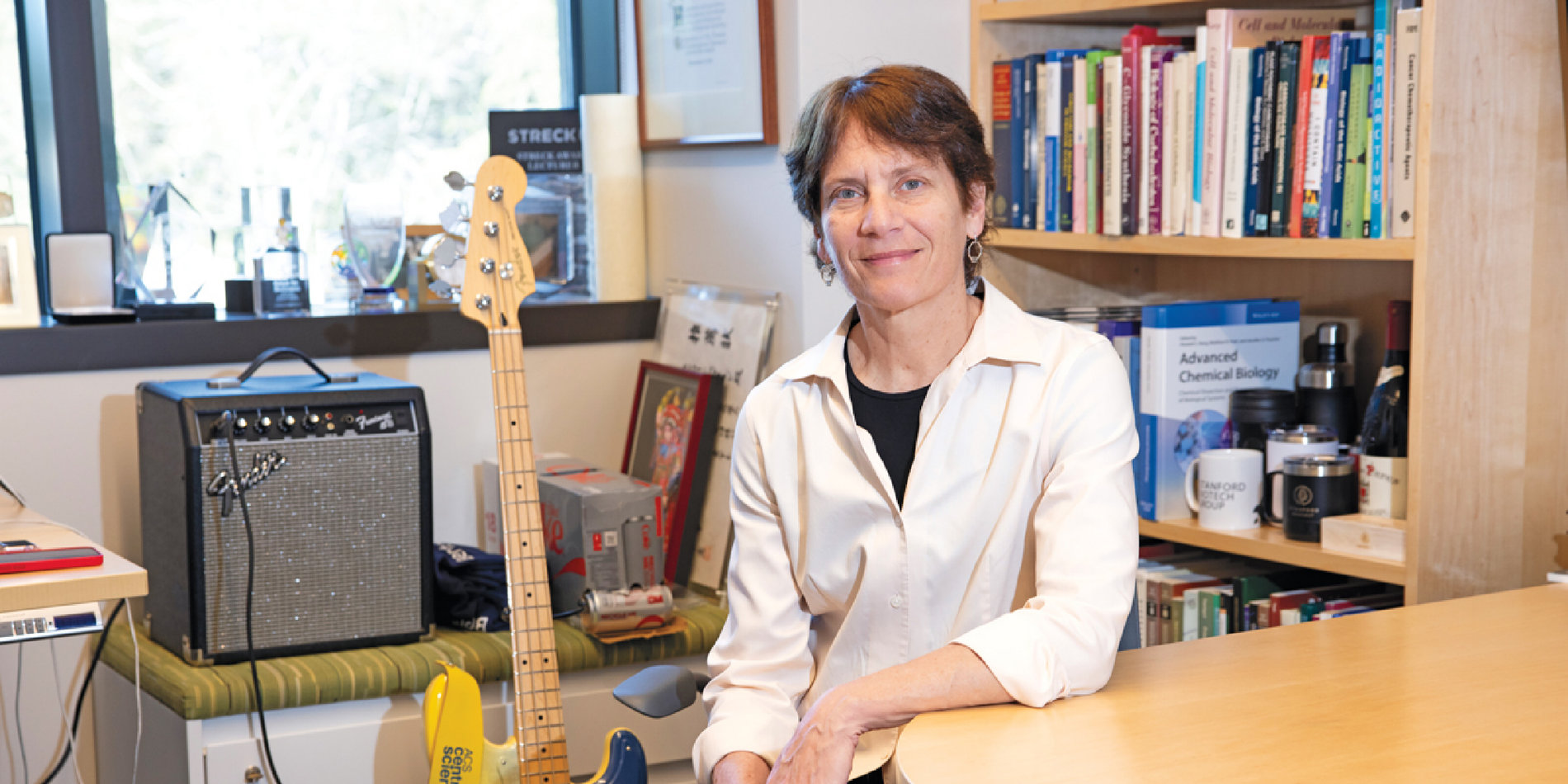The double life of physician-scientist Marie Hollenhorst
Marie Hollenhorst, M.D. Ph.D., is a trainee through the Stanford ChEM-H Physician-Scientist Fellowship, a program that supports M.D. Ph.D. scientists as they pursue independent research during their clinical residency or fellowship. Hollenhorst completed her undergraduate degree in biology at Stanford before entering an M.D. Ph.D program at Harvard, where she worked in the lab of Chris Walsh, now an advisor to Stanford ChEM-H. Starting in 2017, she performed her clinical rotations as a hematology fellow at Stanford Hospital. More recently, she has been working as a researcher in the lab of Carolyn Bertozzi studying blood clotting. She will be joining Stanford Pathology as an attending physician on the transfusion medicine service in July. Here, Hollenhorst talks in her own words about studying blood, the contrasts between lab and clinic and what the Physician-Scientist Fellowship has done for her.

Blood is vital for human health. It is critical for the function of every organ in the body, so blood diseases can manifest with dysfunction in any organ. There is a huge gap between what we know and what we need to know to treat blood diseases, so this is a place where researchers can have a big impact on patients.
My days seeing patients are very different from my days in the lab. They are engaging and challenging in unique ways. My clinic time is dictated by the specific cases I get, and there can be a lot of fluctuation in one day going from patient to patient in the types of questions that I think about. My mind needs to switch gears multiple times an hour to consider the complexities of each case. This contrasts to the situation in the lab where I might work on one scientific question for months to years, and am able to delve deeply into one particular scientific question that fascinates me.
Being a physician-scientist allows me to go back and forth between two quite distinct jobs, and each one makes the other feel more exciting. For me, seeing a patient is like seeing science in action. Each case is a sort of experiment in biology. Every patient represents an opportunity to learn something about biology, and a day in clinic can inspire many scientific questions. But my role as a physician transcends that of understanding the science behind my patient’s suffering; one of the major rewards is the opportunity to build relationships with my patients as we partner to manage their illness.
My research is focused on a new function for platelets that we haven’t understood before. Platelets are little cellular fragments that, when activated, help form blood clots. We already know that when platelets are activated, they release certain small molecules and proteins that help with clot formation. But now, it seems that platelets also release something else: specific enzymes and molecules that modulate the sugars on the surfaces of nearby cells and proteins. Surface sugars influence how cells behave and interact with their environment, so a better understanding of how they are controlled could help us learn about health and disease.
The ChEM-H Physician-Scientist Fellowship has provided me more than just financial support; it has provided me a community and mentoring that have been invaluable. Chris Walsh, Carolyn Bertozzi, and Chaitan Khosla, among others, have been incredible mentors. They have taken the skills I’ve had and amplified them more than I ever thought could be possible. They have really allowed me to think for myself and grow into an autonomous researcher.



